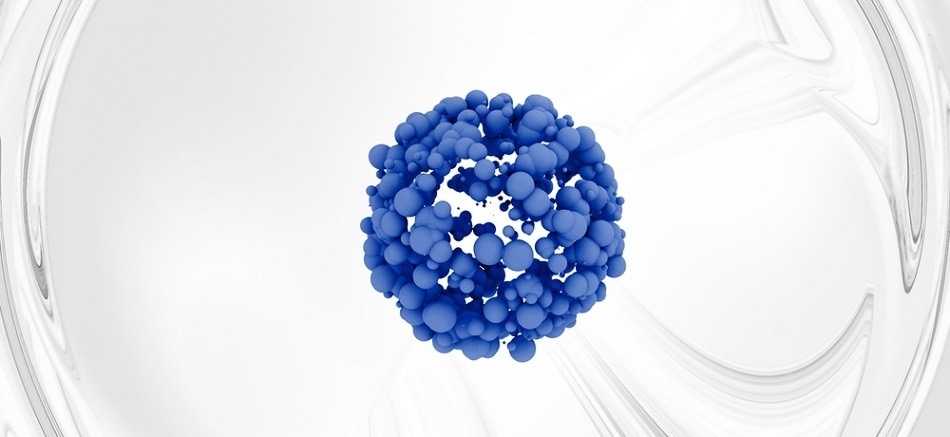This article was updated June 2023.
Our modern lives rely on sensors to allow society to run smoothly. In this article, AZoNano explores what happens nanotechnology and sensor technologies meet.

Image Credits: GiroScience/shutterstock.com
What Are Nanosensors?
Sensors are everywhere, from devices that detect cars at traffic lights and adjust the flow through intersections to those in shopping malls that detect your presence and open doors to allow you to enter.
Sensors measure the water level in your washing machine and ensure it does not overflow. Often without being aware, sensors are involved in our daily lives and have been for many years.
In 1999, researchers at the Georgia Institute of Technology developed the first example of a nanosensor, an innovation constructed from carbon nanotubes. A nanosensor is a unique type of sensor; they are tiny platforms designed to detect and measure biological, chemical, environmental, or physical information at the level of the nanoscale. The unique properties of nanoparticles, such as their large surface area to volume ratio, make them ideal for sensing applications.
“Nanosensors are chemical or mechanical sensors that can be used to detect the presence of chemical species and nanoparticles, or monitor physical parameters such as temperature, on the nanoscale.They find use in medical diagnostic applications, food and water quality sensing, and other chemicals.” (Nature)
Sensors will help us better understand the world we live in.
Aleksandra Lobnik, Founder of Centre for Sensor Technology at University of Maribor and Co-founder of Institute of Sensors and Environmental Protection
Nanosensors in everyday life | Aleksandra Lobnik | TEDxCERN
How Do Nanosensors Work?
An analyte, sensor, transducer and detector are the components of a sensor system, with feedback from the detector to the sensor. Sensitivity, specificity and ease of execution are the main characteristics to consider when designing a sensor.
The materials used to build a nanosensor are related to its application. For example, noble metal nanoparticles have size-dependent optical properties and are often used in optical sensors. Popular materials for building nanoscale sensors include carbon nanotubes and graphene.
Nanosensors typically work by monitoring electrical changes in the sensor materials. For example, carbon nanotube-based sensors work in this way. When a molecule of nitrogen dioxide (NO2) is present, it will strip an electron from the nanotube, which in turn causes the nanotube to be less conductive.
If ammonia (NO3) is present, it reacts with water vapor and donates an electron to the carbon nanotube, making it more conductive. By treating the nanotubes with various coating materials, they can be made sensitive to certain molecules and immune to others.
Like chemical nanosensors, mechanical nanosensors also tend to measure electrical changes. Those used in the MEMS systems that car airbags depend upon are monitoring changes in capacitance. These systems have a minuscule weighted shaft attached to a capacitor. The shaft bends with changes in acceleration and this is measured as changes in capacitance.
They have also been developed to the point of measurement at the single-molecule level.
Types of nanosensors include:
- Carbon nanotubes, quantum dots, peptide or DNA-based fluorescent nanosensors.
- Plasmon coupling–based nanosensors
- Plasmonic enhancing–/quenching–based nanosensors
- Magnetic resonance imaging-based nanosensors
- Photoacoustic-based nanosensors
- Multimodal nanosensors
Nanosensor Applications
Nanosensors can be chemical sensors or mechanical sensors. They are used in a variety of applications across a range of industries, from biomedical to environmental. Some common applications are highlighted below:
• Detecting various chemicals in gases for pollution monitoring.
• Medical diagnosis, either as bloodborne sensors or in lab-on-a-chip type devices.
• To monitor physical parameters such as temperature, displacement and flow.
• As accelerometers in MEMS devices like airbag sensors.
• To monitor plant signaling and metabolism to understand plant biology.
• To study neurotransmitters in the brain to understand neurophysiology.
• To collect real-time measurements of soil conditions, such as pH, moisture, nutrients, and residual pesticides for agricultural purposes.
• To detect pesticides on the surface of fruits and vegetables and to detect carcinogens in food.
• To detect pathogens in food as part of food safety and quality control measures.
• The real-time monitoring of the metabolic activity of cancer cells in response to therapeutic intervention.
• The detection and monitoring of small-molecule metabolites.
Nanosensors: Looking to the Future
Nanosensors aid in the progression of fields such as medical technology; precision agriculture; urban farming; chemicals, optics, plant nanobionics; prognostics and diagnostics; biomedicine, SERS-based sensors; and many industrial applications.
As the cost of developing and producing nanosensors reduces, we will likely see further applications emerge. The field of diagnostics, in particular, is set to benefit from future advancements in nanosensor technology.
The SARS-CoV-2 (COVID-19) pandemic has recently thrown a spotlight on nanosensor technology, thanks to recent research that has led to a new, super quick method of detecting coronavirus using nano-based sensors.
In 2023, a team of researchers from the Norwegian University of Science and Technology (NTNU), Oslomet and the University of Tabriz in East Azerbaijan reported that they had developed a graphene-based nanosensor capable of detecting coronavirus in blood samples. The platform was designed to overcome the limitations of the currently available PCR and antibody tests.
It is likely that work will continue to develop nanosensors in rapid diagnostic applications as well as in other areas of clinical diagnostics in the future.
References and Further Reading
https://www.nature.com/subjects/nanosensors
https://www.annualreviews.org/doi/abs/10.1146/annurev-anchem-061417-125747
https://www.annualreviews.org/doi/abs/10.1146/annurev-anchem-061516-045310?intcmp=trendmd
https://www.annualreviews.org/doi/abs/10.1146/annurev-anchem-061417-125724?intcmp=trendmd
Krivitsky, V. et al. (2019) “Cellular metabolomics by a universal redox-reactive nanosensors array: From the cell level to tumor-on-a-chip analysis,” Nano Letters, 19(4), pp. 2478–2488. Available at: https://pubs.acs.org/doi/10.1021/acs.nanolett.9b00052
Maghoul, A. et al. (2022) “An optical modeling framework for coronavirus detection using graphene-based Nanosensor,” Nanomaterials, 12(16), p. 2868. Available at: https://doi.org/10.3390/nano12162868.
Disclaimer: The views expressed here are those of the author expressed in their private capacity and do not necessarily represent the views of AZoM.com Limited T/A AZoNetwork the owner and operator of this website. This disclaimer forms part of the Terms and conditions of use of this website.